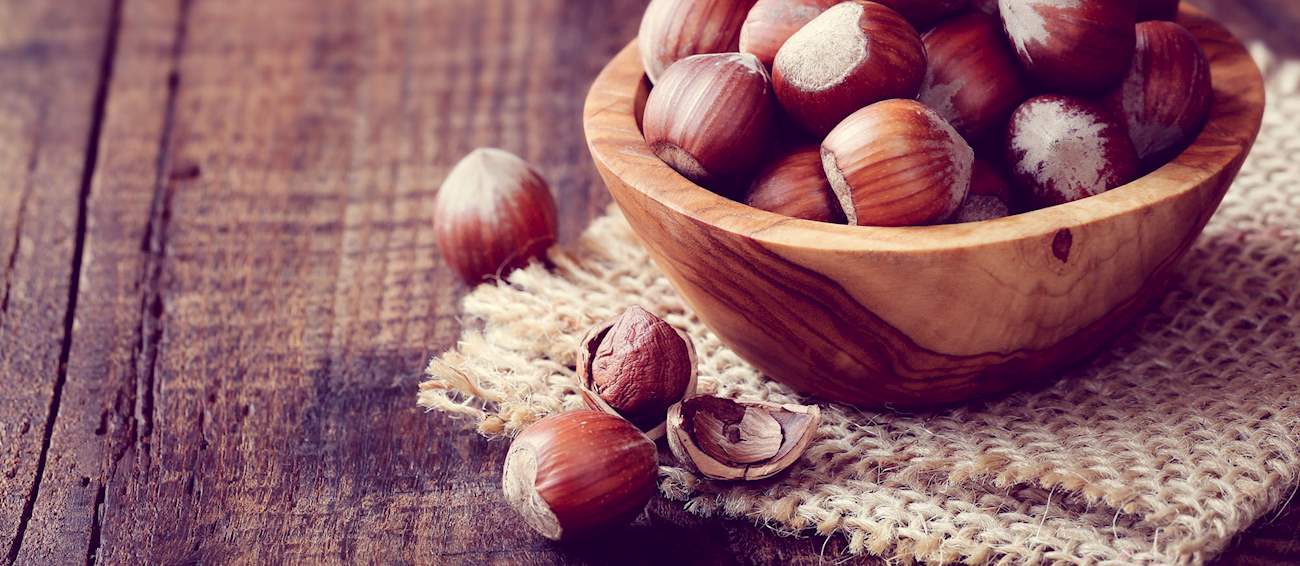TABLE OF CONTENTS
Best Italian Hazelnuts Types
Named after Giffoni Valle Piana, a lush valley settled at the foot of Mount Licinici, Nocciola di Giffoni refers to dried hazelnuts grown and produced within the province of Salerno. Typically shelled and roasted, the hazelnuts of Giffoni are particularly prized by the confectionery industry for their flavor, aroma and long shelf life.
Even though they are widely used in local savory dishes, Giffoni hazelnuts are most often marketed as a sweet snack, coated in chocolate, nougat or honey. Also, they make for an excellent ingredient in preparing various cakes and biscuits, pastry creams, ice creams, and even liqueurs.
Named after its region of origin, Nocciola del Piemonte (Piedmont hazelnuts) refers to hazelnuts of the Tonda Gentile Trilobata variety, grown in the hills of Langhe-Roero and Monferrato and produced within the provinces of Alessandria, Asti, Cuneo, Turin, Novara, Biella and Vercelli.
Considered one of the best hazelnuts for confectionery industry, Nocciola del Piemonte is characterized by its crunchy flesh, long shelf life, and an amazing flavor and aroma, especially if roasted. Piedmont hazelnuts are the essential ingredient of Gianduiotto nougat pralines, a typical Piedmont confectionary product, but they're also widely used in the preparation of various pastry creams, cake, ice creams and liqueurs.
Traditionally produced in the neighboring provinces of Viterbo and Rome, Nocciola Romana refers to dried hazelnuts of the Tonda Gentile Romana and Nocchione varieties, grown in the micronutrient-rich volcanic soil of the Cimini and Sabatini mountains.
Whether enjoyed raw, dried or roasted, the crunchy Roman hazelnuts are packed with mono-unsaturated fats and vitamins E and K, but they're also rich in calories! In the traditional Viterbo cuisine, Roman hazelnuts are most often used as an essential ingredient in the preparation of many local desserts, including Tozzetti - anise, almond and hazelnut biscotti, as well as other biscuits such as Ossetti da Morto, Brutti Buoni and Mostaccioli Romani.
TasteAtlas food rankings are based on the ratings of the TasteAtlas audience, with a series of mechanisms that recognize real users and that ignore bot, nationalist or local patriotic ratings, and give additional value to the ratings of users that the system recognizes as knowledgeable. TasteAtlas Rankings should not be seen as the final global conclusion about food. Their purpose is to promote excellent local foods, instill pride in traditional dishes, and arouse curiosity about dishes you haven’t tried.




